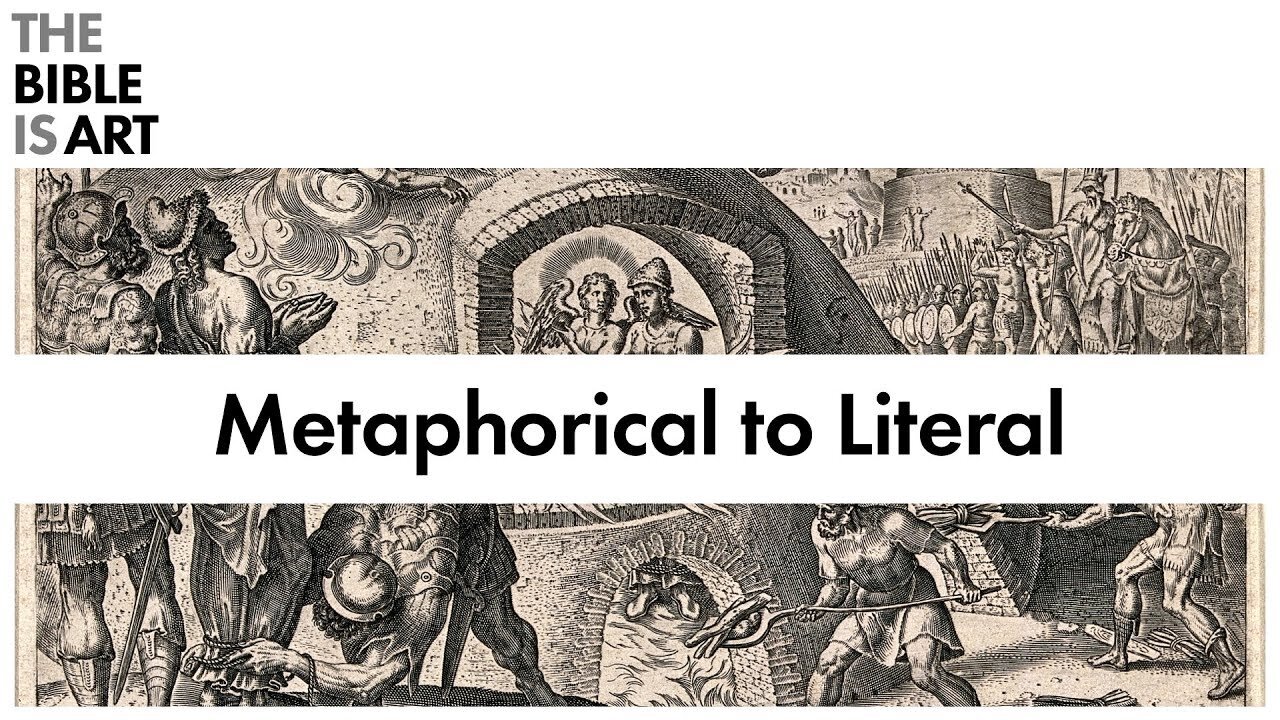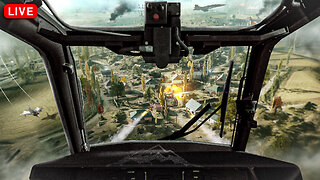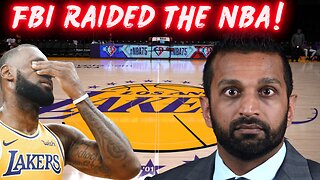Premium Only Content

The Art of the Reverse Metaphor
In this video I look at the fascinating literary technique of moving from a metaphor to reality.
The Bible is the greatest work of literary genius. And The Bible is Art is a YouTube Channel devoted to explaining this literary art in all its sophistication, elegance, and design.
Patreon: https://www.patreon.com/thebibleisart
website: https://www.thebibleisart.com
email: [email protected]
twitter: @johnbhiggins
music: Kai Engel, "Coelum" (https://www.kai-engel.com)
| How to Learn to Read the Bible as Literary Art |
Reading Biblical Narrative: An Introductory Guide (https://amzn.to/30LzaRa)
Narrative Art in the Bible (https://amzn.to/30RVGIb)
The Art of Biblical Narrative (https://amzn.to/3aDrIfk)
Old Testament Narrative: A Guide to Interpretation (https://amzn.to/38rcE2C)
The Poetics of Biblical Narrative (https://amzn.to/2Gh4cqE)
| Literary Structure |
Literary Structure of the Old Testament (https://amzn.to/30Jdm8X)
Style And Structure In Biblical Hebrew Narrative (https://amzn.to/2RDTTlQ)
| Genesis |
Creation: The Story of Beginnings - Grossman (https://amzn.to/2GlPwq9)
Abram to Abraham: A Literary Analysis of the Abraham Narrative - Grossman (https://amzn.to/2v7id7Z)
Narrative Art in Genesis - Fokkelman (https://amzn.to/2ulmd4t)
A Commentary on the Book of Genesis (Part I) - Cassuto (https://amzn.to/2NOAhdt)
A Commentary on the Book of Genesis (Part II) - Cassuto (https://amzn.to/2Gcuk6d)
Genesis: A Commentary - Waltke (https://amzn.to/2vaBvt7)
The Gospel of Genesis: Studies in Protology and Eschatology - Gage (https://amzn.to/2RGjRFo)
Abraham and All the Families of the Earth: A Commentary on the Book of Genesis 12-50 - Janzen (https://amzn.to/2TVyCqJ)
Genesis 1-15, Volume 1 - Wenham (https://amzn.to/2TQnYRO)
Genesis 16-50, Volume 2 - Wenham (https://amzn.to/3aDY21J)
| Transcription |
This week we’re gonna talk about moving from metaphorical things to literal things and from literal things to metaphorical things.
So It’s a common literary technique to use physical things for metaphorical reasons. For instance in Dante’s Divine Comedy, Dante is on a physical journey from hell to heaven that is meant to be a metaphor for his spiritual journey or in the Bible, Israel’s physical wilderness wanderings for 40 years are meant to be metaphorical of their spiritual wanderings. So you have some physical object or action that happens in a scene or a character and it is also meant to be a metaphor for some non-physical thing: like a character trait or theme. A messy room symbolizing a messy mind of a character.
But you can do the opposite, too. That is where you start with a metaphor and that becomes a physical, literal thing in the story. It’s kind of hard to understand abstractly so let me show you a few examples.
I noticed this in two places in the Bible. First in the gospels when Jesus heals a blind man. The strange thing about this is that nowhere in the Old Testament does it say that the Messiah will heal blind people. In Isaiah 35, when God is talking about all the good things that are going to happen when he comes back and it says that the “eyes of the blind will be opened”, but that seems to be a metaphor. Why? Well, earlier in Isaiah, in chapter 6 when God is judging Israel he says that Isaiah is to “Make the heart of this people dull, and their ears heavy, and blind their eyes; lest they see with their eyes, and hear with their ears, and understand with their hearts, and turn and be healed.” That is, the physical faculties of seeing and hearing are metaphors for moral and spiritual faculties. So later in Isaiah, God says that because Israel is spiritually and morally blind and God will give them spiritual moral eyes, cure their blindness. But when Jesus comes, he unexpectedly opens physically blind eyes. The metaphor of blindness came first, then physical blindness.
Another example of this is with the metaphor of a furnace. In Isaiah 48, God says that the exile is like being in a furnace (48:10). That is, a fiery furnace is a metaphor for physical exile.
But then, in the book of Daniel, when the Israelites are in exile Shadrach, Meschach, and Abendego are literally thrown into a fiery furnace. The metaphor came first, then the literal thing.
So why then this literary technique, what does it do?
Well, I’m not sure, at least not sure of every reason. But I do know that it tells you something about the author and something about the text.
First, it shows you the genius the author is capable of. Bach famously wrote a short phrase that represented his name and would sprinkle it throughout his work. This is the phrase.
If you want to learn more about that and the phenomenon of musical cryptograms, you can see a great video linked in the description.
This reverse metaphor technique demonstrates the literary virtuosity of God, the ultimate author, that he can take imaginary things and make them real, make worlds with this mind and then his hands.
-
 0:59
0:59
onecrazimofo
4 years agoChihuahua Reverse cough...
41 -
 LIVE
LIVE
Side Scrollers Podcast
3 hours ago🔴FIRST EVER RUMBLE SUB-A-THON🔴DAY 4🔴WAKE YOUR ASS UP!
937 watching -
 LIVE
LIVE
The White House
59 minutes agoPresident Trump Makes an Announcement, Oct. 23, 2025
1,419 watching -
 1:04:21
1:04:21
DeVory Darkins
3 hours ago $19.19 earnedDemocrats PANIC by launching ICE doxxing portal as Newsom suffers MAJOR LEGAL BLOW
110K52 -
 LIVE
LIVE
StoneMountain64
2 hours agoBattlefield 6 Battle Royale Prep and Season 1 is coming
64 watching -
 42:20
42:20
Rebel News
2 days agoTommy Robinson tours Jerusalem's historic City of David
4.44K25 -
 12:05
12:05
Clintonjaws
6 hours ago $3.44 earnedPortland ICE Rioters Getting Arrested - This Is Priceless!
14.4K5 -
 1:10:52
1:10:52
The White House
3 hours agoPress Secretary Karoline Leavitt Briefs Members of the Media, Oct. 23, 2025
18.7K7 -
 48:40
48:40
iCkEdMeL
2 hours ago $1.25 earnedMafia Ties EXPOSED: NBA Stars Busted in Massive Gambling Ring 💥
6.93K5 -
 46:29
46:29
Professor Nez
2 hours ago🚨I HAVE RECEIPTS! They’re Sacrificing Americans for Votes 😡
5.81K2